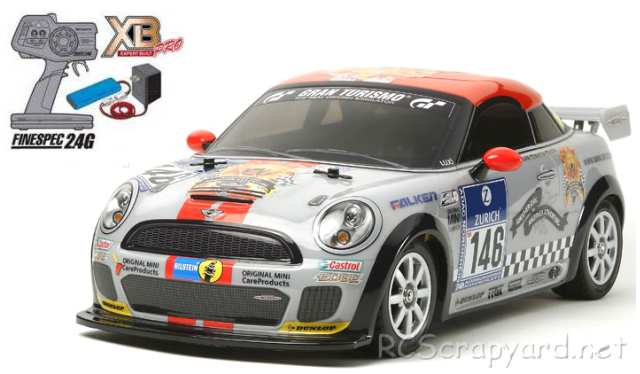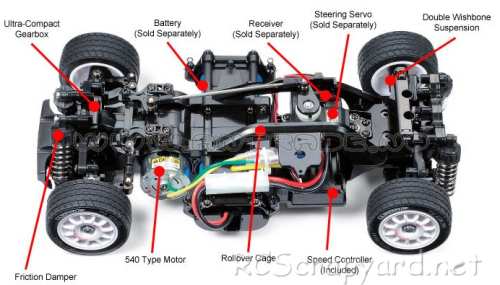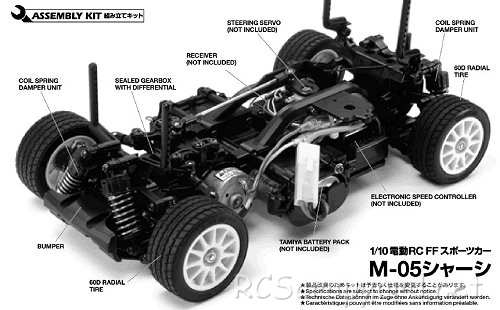

|


|
Tamiya XB Mini JCW Coupe - 57829
|
Released by Tamiya in April 2012, the XB Mini JCW Coupe (#57829) is No.129 in the RTR Pre-Assembled Expert Built Series, based on the long wheelbase version of the M-05 chassis (M-05L). The Tamiya Mini JCW Coupe kit (#58520) was introduced in March 2012. The model is of Mini JCW Coupe that took part in the SP 3T class at the 39th ADAC Zurich 24 Hours of Nurburgring 2011.
A pre-painted lexan bodyshell, a 540 motor and radio system are included, but may require a battery, charger and speed controller to complete (specifications differ from country to country).

The 2WD, FWD (front wheel drive) M05 Chassis has a lower centre of gravity than previous versions and good weight distribution which coupled with four wheel independent double wishbone suspension with coil spring over friction dampers, gear type differential and a three piece steering linkage gives excellent stability and handling on high speed corners.
The M05 Chassis has three possible wheelbase options: The basic 210mm, M05M 225mm and M05L 239mm, that are set by changing the position of the rear suspension parts.
The kit comes with plastic bush type bearings, that after a short while, when dust and grit get into them, actually wear into the metal drive shafts - our recommendation is that these should be replaced by steel shielded ball bearings ASAP.
To get the best from the Tamiya M-05 Chassis, it needs to be fine tuned, for smooth acceleration under control and handle corners at high speed, without slipping off the track. Small adjustments can make a Big difference and our simple to understand, step by step procedure, will guide you to the best Set-up for your driving style.








|
|
|

|


Buying a Used Tamiya Mini JCW Coupe
|









|






|
|
|
|
Hints, Tips and Information How to Charge Rechargeable Batteries for Peak PerformanceNi-Cad (Nickel Cadmium) Batteries
1/ All Ni-Cad Batteries have to be Discharged soon after use. This is to avoid the dreaded "Memory" effect that on subsequent re-charges can cause a momentary drop in performance during a race. A simple discharger can be made from a car 12v bulb.
Ni-Mh (Nickel Metal Hydride) Batteries
1/ Never charge Ni-Mh batteries at a current higher than 4.5 amps. Although these batteries can give a higher voltage than Ni-Cad Batteries, they are much more sensitive and easy to damage if charged too quickly. |
|
Hints, Tips and Information
Shock Mount Settings
The combinations of Shock settings available on the majority of on and off road cars are far too many for this article to cover, so I will endeavour to explain some of the basics, that should give you some idea what these changes might achieve. Some of the settings suggested may not be available on all RC model cars. |
|
RC Models:
|
Radio & Motors: |
Other
Accessories: |